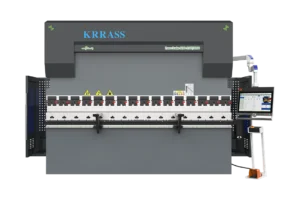Ironworker machines are versatile tools that can be used for a variety of metalworking tasks, including punching, shearing, and notching. They can be a valuable asset to any metal fabrication shop, but it is important to use them efficiently to maximize productivity.
Here are some tips and tricks for increasing efficiency with ironworker machines:
1.Choose the right machine for the job
1.Choose the right machine for the job
There are many different types of ironworker machines available, each with its own strengths and weaknesses. It is important to choose a machine that is right for the specific tasks that you will be using it for.
Factors to consider when choosing an ironworker machine include:
- The type of tasks you need to perform
- The type and thickness of material
- The required accuracy and tolerance
- Your budget
2.Set up the machine properly
Before using an ironworker machine, it is important to set it up properly. This includes:
- Making sure the machine is level
- Installing the tooling correctly
- Installing the guards
3.Use the right tooling
There are many different types of tooling available for ironworker machines. It is important to use the right tooling for the job in order to ensure that the work is done correctly and safely.
Factors to consider when choosing tooling include:
- The type of task you need to perform
- The type and thickness of material
- The required accuracy and tolerance

4.Plan your work
Before you start working on an ironworker machine, it is important to plan your work to maximize ironworker efficiency. Here's a breakdown of the planning process:
- Identify Job Requirements: Clearly define the tasks you need the ironworker for. This includes the number of parts, their dimensions and tolerances, and the specific metalworking operations required (punching, shearing, bending, etc.).
- Material Selection and Optimization: Choose the most appropriate material for the job, considering factors like cost, strength, workability, and thickness compatibility with the ironworker's capacity. Analyze possibilities for material nesting (arranging multiple parts within a sheet) to minimize material waste.
- Tooling Selection and Sequencing: Plan the sequence of operations and select the corresponding tooling for each step. Consider factors like punch and die size, throat depth (working area clearance), and material thickness limitations. Ensure the tooling sequence minimizes tool changes, reducing setup times.
- Work Order System: Implement a work order system to track jobs, materials, and tooling needed. This helps maintain organization, reduces errors, and facilitates production scheduling.
5.Optimize Material Handling
Material handling significantly impacts ironworker efficiency. Here are some key strategies:
- Minimize Material Movement: Position raw material (sheets, bars, etc.) close to the ironworker to reduce travel time and operator effort. Consider utilizing material carts or rollers for easier movement.
- Implement Stacking and Feeding Systems: For high-volume production, invest in automated material stacking and feeding systems to minimize manual loading and unloading, leading to faster throughput.
- Utilize Material Remnants: Develop a system to collect and organize material remnants left from punching or shearing operations. These remnants can potentially be used for smaller parts, reducing material waste.
6.Preventive Maintenance
Regular maintenance is crucial for maintaining ironworker efficiency and safety. Here are some key practices:
- Develop a Maintenance Schedule: Establish a routine maintenance schedule for the ironworker, including tasks like lubrication, cleaning, and tool sharpening. Refer to the manufacturer's recommendations for specific maintenance intervals.
- Daily Inspections: Perform daily visual inspections of the machine for any signs of wear, damage, or leaks. Address minor issues promptly to prevent them from escalating into bigger problems.
- Operator Training: Train operators on basic maintenance procedures like lubrication and tool cleaning. This empowers them to identify potential issues and maintain peak machine performance.
7.Continuous Improvement
A culture of continuous improvement fosters long-term ironworker efficiency gains. Here are some key approaches:
- Process Analysis: Regularly analyze ironworker processes to identify bottlenecks and areas for improvement. This could involve analyzing production data, operator feedback, and material flow.
- Technology Integration: Consider implementing advanced technologies like computer-aided manufacturing (CAM) software to optimize tool paths and punching sequences. This can lead to faster cycle times and reduced scrap rates.
- Lean Manufacturing Principles: Apply lean manufacturing principles to ironworker operations. This involves minimizing waste (material, time, motion), optimizing workflow, and promoting continuous improvement.
8.Conclusion
In conclusion, by implementing the tips above and tricks, metal fabrication shops can significantly increase the efficiency of their ironworker machines, leading to enhanced productivity and improved operations on the shop floor. However, the choice of equipment plays a pivotal role in achieving optimal results. This is where KRRASS, a renowned manufacturer in the industry, steps in.
KRRASS specializes in producing top-quality Ironworker machines that embody precision, versatility, and reliability. With a focus on durability and innovation, KRRASS machines are engineered to meet the demanding requirements of modern metalworking applications. Whether punching, shearing, or notching, KRRASS Ironworker machines offer superior performance, making them indispensable assets in any metal fabrication shop.
By investing in KRRASS Ironworker machines, businesses can elevate their efficiency and productivity to new heights. With a commitment to excellence and customer satisfaction, KRRASS remains a trusted partner for metalworking professionals seeking cutting-edge solutions. Choose KRRASS and unlock the full potential of your metal fabrication operations.




